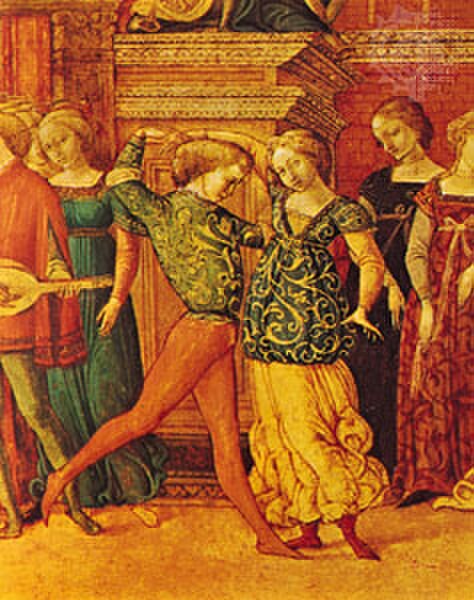The galliard was a form of Renaissance dance and music popular all over Europe in the 16th century. It is mentioned in dance manuals from England, Portugal, France, Spain, Germany, and Italy.
Galliard in Siena, Italy, 15th century
Unknown dancers performing lavolta. The painting is currently in Penshurst Place in Kent.
Renaissance dances belong to the broad group of historical dances, specifically those during the Renaissance period. During that period, there was a distinction between country dances and court dances. Court dances required the dancers to be trained and were often for display and entertainment, whereas country dances could be attempted by anyone. At Court, the formal entertainment would often be followed by many hours of country dances which all present could join in. Dances described as country dances such as Chiarantana or Chiaranzana remained popular over a long period – over two centuries in the case of this dance. A Renaissance dance can be likened to a ball.
Dance at Herod's Court, an engraving by Israhel van Meckenem, c. 1490
Ambrosius Benson, Elegant couples dancing in a landscape, before 1550
French painting of the volta, from Penshurst Place, Kent, often wrongly assumed to be of Elizabeth I




